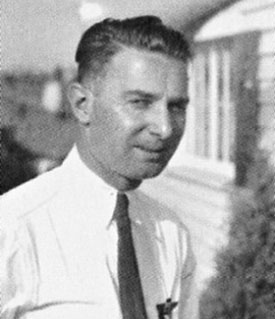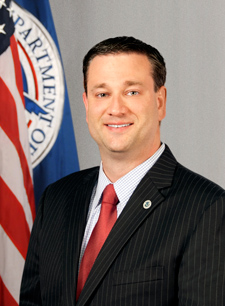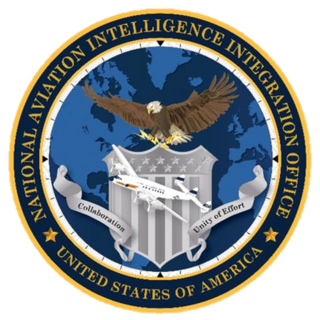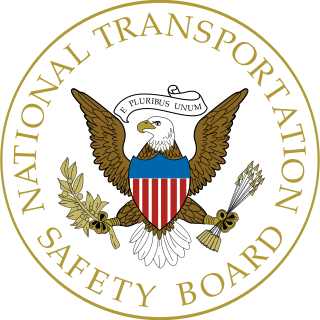 W
WAircraft Maintenance Technician (AMT) is a tradesperson and also refers to a licensed technical qualification for carrying out aircraft maintenance. AMTs inspect and perform or supervise maintenance, preventive maintenance, repairs and alteration of aircraft and aircraft systems.
 W
WThe Airline Deregulation Act is a 1978 United States federal law that deregulated the airline industry in the United States, removing federal control over such areas as fares, routes, and market entry of new airlines. The Civil Aeronautics Board's powers of regulation were phased out, but the regulatory powers of the Federal Aviation Administration (FAA) were not diminished over all aspects of aviation safety.
 W
WThe Airport and Airway Development Act of 1970 was a United States federal law passed during the 91st Congress, and signed into law by President Richard Nixon in conjunction with the Airport and Airway Revenue Act on May 21, 1970. The act was meant to fill funding gaps in the airport and airway system, which had become inadequate due to the rapid growth of aviation. The legislation was estimated to generate greater than $11 billion in funds,
 W
WThe Aviation Service Act is a U.S. law passed in 1914. It created within the Signal Corps an Aviation Section to replace the Aeronautical Division. It directed the Aviation Section to operate and supervise "all military [U.S. Army] aircraft, including balloons and aeroplanes, all appliances pertaining to said craft, and signaling apparatus of any kind when installed on said craft." The section would also train "officers and enlisted men in matters pertaining to military aviation," and thus embraced all facets of the Army's air organization and operation. The old Aeronautical Division continued to exist, but operated as the Washington office of the new section.
 W
WThe Digital Obstacle File (DOF) describes all known obstacles of interest to aviation users in the United States, with limited coverage of the Pacific Ocean, the Caribbean, Canada and Mexico. The obstacles are assigned unique numerical identifiers and accuracy codes.
 W
W"Don't touch my junk" is a phrase that became popular in the United States in 2010 as a criticism of Transportation Security Administration (TSA) patdowns. The word "junk" is American English slang for a man's genitals. The phrase refers to the offense many people took to the November 2010 decision by TSA to begin full body patdowns of airline passengers in the U.S. who refused to go through a full body scanner.
 W
WThe Federal Air Marshal Service (FAMS) is a United States federal law enforcement agency under the supervision of the Transportation Security Administration (TSA) of the United States Department of Homeland Security (DHS).
 W
WA Federal Flight Deck Officer (FFDO) is an airplane pilot who is trained and licensed to carry weapons and defend commercial aircraft against criminal activity and terrorism. The Federal Flight Deck Officer program is run by the Federal Air Marshal Service, and an officer's jurisdiction is limited to the flight deck or cabin of a commercial airliner or a cargo aircraft while on duty. FFDOs are federal law enforcement officers sworn and deputized by the U.S. Department of Homeland Security.
 W
WThe United States federal excise tax on gasoline is 18.4 cents per gallon and 24.4 cents per gallon for diesel fuel. The federal tax was last raised October 1, 1993 and is not indexed to inflation, which increased by a total of 77 percent from 1993 until 2020. On average, as of April 2019, state and local taxes and fees add 34.24 cents to gasoline and 35.89 cents to diesel, for a total US volume-weighted average fuel tax of 52.64 cents per gallon for gas and 60.29 cents per gallon for diesel.
 W
WClifford "Cliff" Henderson (1895–1984) was the managing director of the National Air Races from 1928 through 1939. Described as "the Barnum of aviation," he obtained sponsors for two of the most well-known air races of the period, the Bendix transcontinental and the Thompson closed-course classics. The Thompson Trophy was first awarded in 1929. The 1929 National Air Races included the first official women-only event, the Women's Air Derby, a cross-country race from Los Angeles to Cleveland, Ohio. In 1931, he convinced businessman Vincent Bendix to sponsor the Bendix Trophy Race, a transcontinental speed dash open to men and women. Henderson was awarded the L'Ordre de 'Etoile Noire de Benin for his service in World War II as the U.S. Air Force Military Commissioner of Dakar.
 W
WDouglas Hofsass is a former Assistant Administrator in the United States Department of Homeland Security, assigned to the Transportation Security Administration. In addition to his role as the Assistant Administrator overseeing risk based security and trusted traveler programs, he also served as the Federal Security Director in New York City. As part of his responsibilities in New York City, he oversaw the first implementation of federal security operations under DHS at the Downtown Manhattan Heliport and the East 34th Street Heliport for commercial helicopter flights to John F Kennedy International Airport, Newark Liberty International Airport and LaGuardia Airport. Hofsass also held the posts of General Manager of Commercial Aviation and Deputy Assistant Administrator for Policy and Industry Engagement for the Transportation Security Administration. He was heavily involved in launching the TSA Pre-Check Program, and claimed a collaborative partnership with the US Customs Department and their Global Entry Program. Hofsass served at the Transportation Security Administration from 2002 until 2013, including several years working directly for Administrators John S. Pistole, Kip Hawley and Gale Rossides. Prior to his Federal executive service, Hofsass was with United Airlines management for nearly 10 years. Hofsass returned to the commercial aviation sector in 2013.
 W
WThe National Aviation Intelligence Integration Office (NAI2O) is the lead organization for coordinating and integrating the United States Government's (USG) Intelligence Community (IC) perspective on civil aviation issues. NAI20 brings together the Global Aviation Community Of Interest (GACOI) to improve civil aviation safety and security through communication and intelligence/information sharing in order to produce integrated and actionable aviation intelligence.
 W
WThe National Transportation Safety Board (NTSB) is an independent U.S. government investigative agency responsible for civil transportation accident investigation. In this role, the NTSB investigates and reports on aviation accidents and incidents, certain types of highway crashes, ship and marine accidents, pipeline incidents, and railroad accidents. When requested, the NTSB will assist the military and foreign governments with accident investigation. The NTSB is also in charge of investigating cases of hazardous materials releases that occur during transportation. The agency is based in Washington, D.C. It has four regional offices, located in Anchorage, Alaska; Denver, Colorado; Ashburn, Virginia; and Seattle, Washington. The agency also operates a national training center at its Ashburn facility.
 W
WThe Pearson Field Education Center delivers experiential aviation based science, technology, engineering and math (STEM) programs for young people ages kindergarten through 12th grade (K-12) on historic Pearson Field, Vancouver, Washington. Knowledge and experience gained at PFEC provides a foundation for young people’s further education and careers in STEM based fields, including aviation, while instilling an appreciation for those that have gone before them and the history of Pearson Field. PFEC's mission is "Through aviation, we inspire youth to pursue education and careers in STEM fields, while instilling an appreciation for the people, events, and innovations of historic Pearson Field."
 W
WPilot certification in the United States is typically required for an individual to act as a pilot-in-command of an aircraft. It is regulated by the Federal Aviation Administration (FAA), a branch of the U.S. Department of Transportation (USDOT). A pilot may be certified under 14 Code of Federal Regulations (CFR) Part 61 or 14 CFR Part 141. Pilots may also be certified under 14 CFR Part 107 for commercial drone operations.
 W
WIn United States aviation, a sectional chart, often called sectional for short, is a type of aeronautical chart designed for navigation under visual flight rules.
 W
WThe Transparent Airfares Act of 2014 was a proposed legislation that would have changed government regulations about how airlines advertise fares so that they could advertise the base, listing government imposed taxes and fees separately.
 W
WThe United States Aeronautical Reserve (U.S.A.R.) was an early aviation organization created by Harvard University’s Aero Club on September 8, 1910. The founder was John H. Ryan, and the General Secretary Richard R. Sinclair. The earliest aviators and others to enroll near the founding date were: “Glen H. Curtiss, Wilbur Wright, Harry S. Harkness, Augustus Post, Clifford B. Harmon, Allan R. Ryan, Herbert L. Saterlee, ex-governor Curtis Guild, Jr.,, Edwin Gould, Charles K. Hamilton, Horace F. Karnay, John G. Stratton, George M. Cox, Gen. Nelson A. Miles, Commodore John H. Hubbard, Charles F. Willard, Charles J. Glidden, Walter Brookins, Ralph J. Stone, William Hilliard, Cromwell Dixon, Samuel F. Perkins, Capt. Thomas F. Baldwin, Greeley S. Curtiss, General W. A. Bancroft, and Adams D. Clafton.”, Recruiting stations were at Harvard University, in Boston, Massachusetts; Mineola, Long Island; and Belmont Park, Long Island.
 W
WIn the United States and Canada, Victor airways are low-altitude airways. They are defined in straight-line segments, each of which is based on a straight line between either two VHF omnidirectional range (VOR) stations, or a VOR and a VOR intersection, hence the beginning letter V.
 W
WYoung Eagles is a program created by the US Experimental Aircraft Association designed to give children between the ages of 8 to 17 an opportunity to experience flight in a general aviation airplane while educating them about aviation. The program is offered free of charge with costs covered by the volunteers. It was launched in 1992 and, by 2016, has flown more than 2 million children in 90 countries. The program's presenting sponsors are Phillips 66 and Sporty's Pilot Shop.